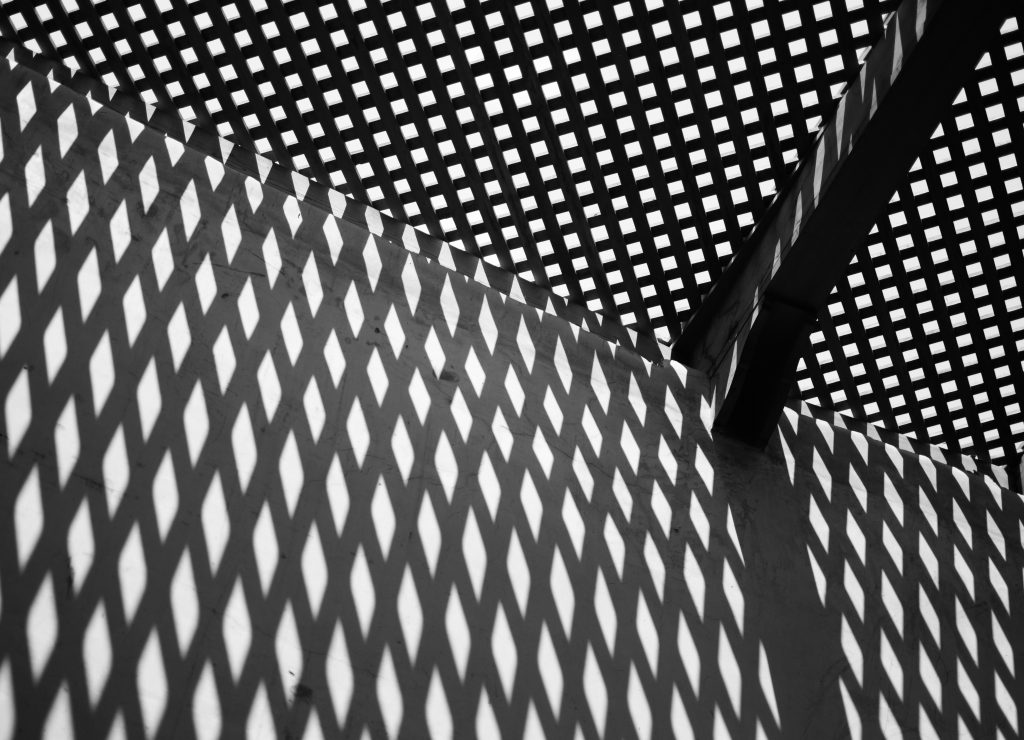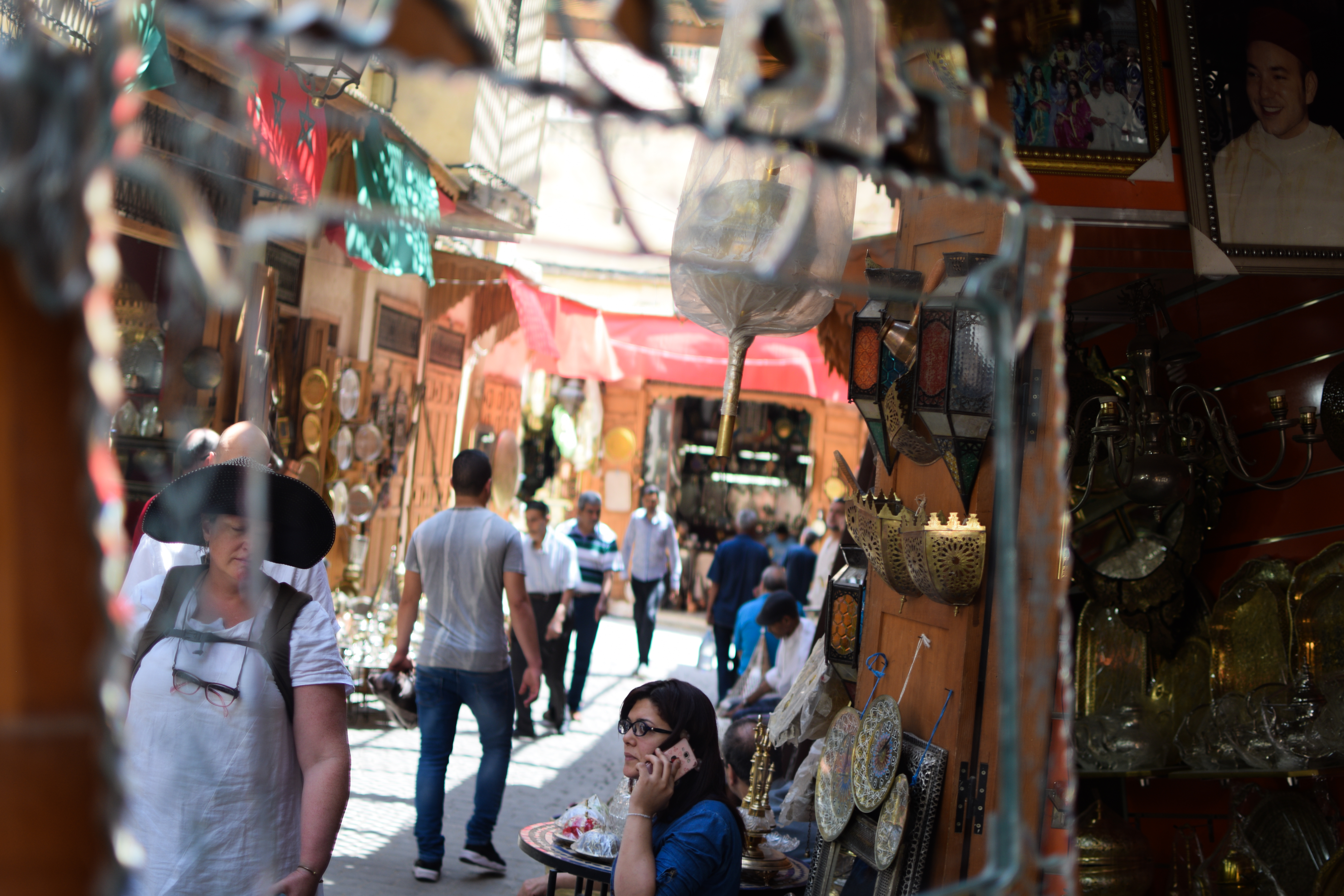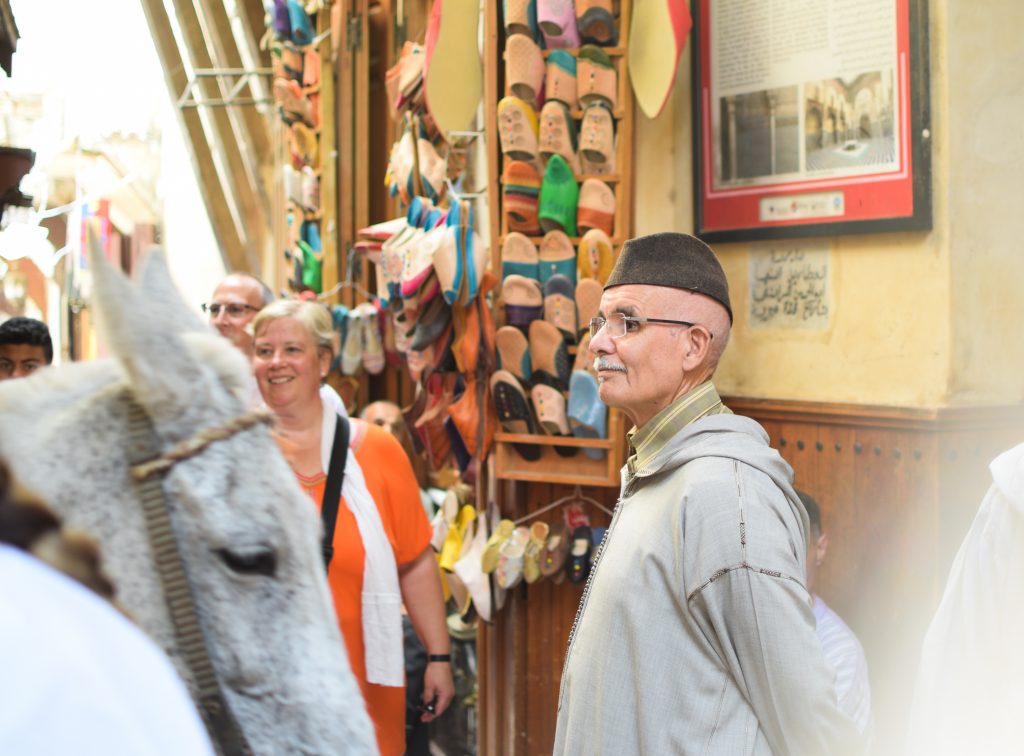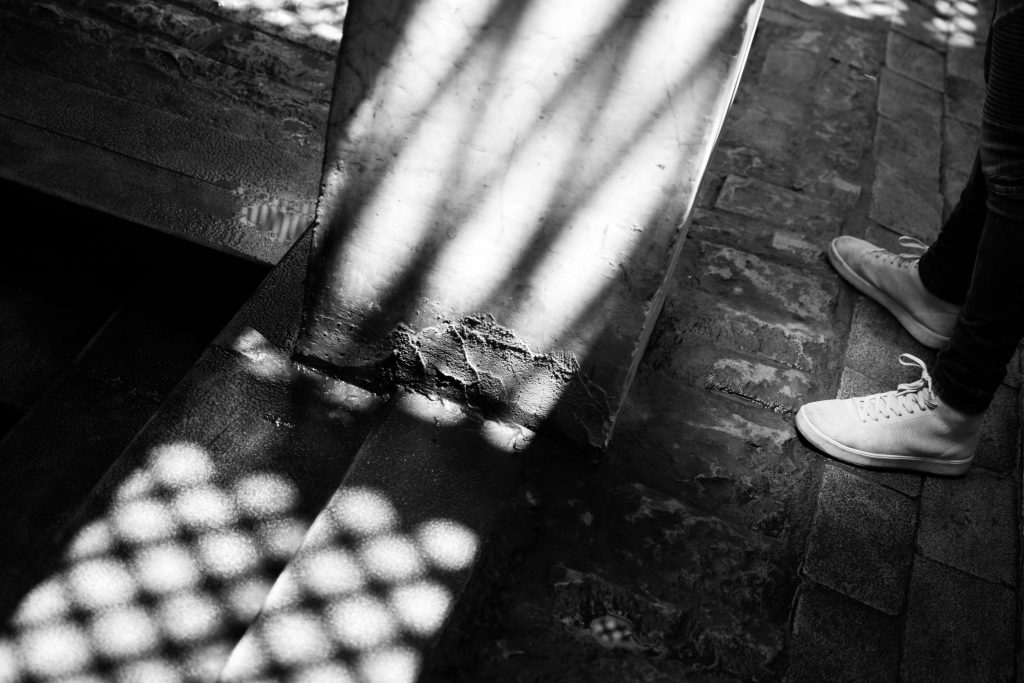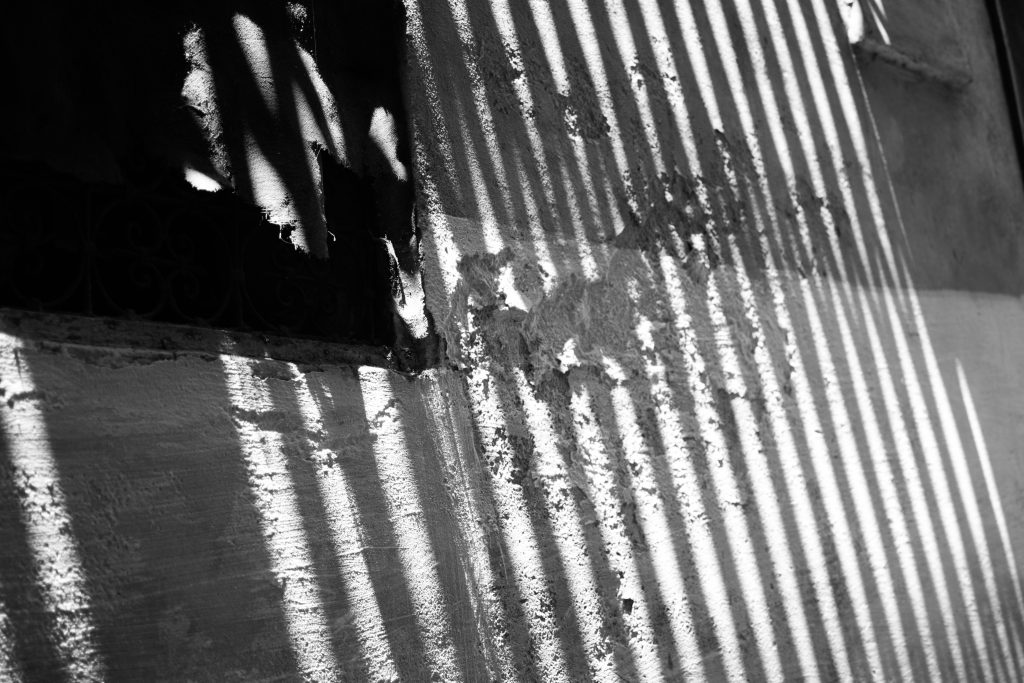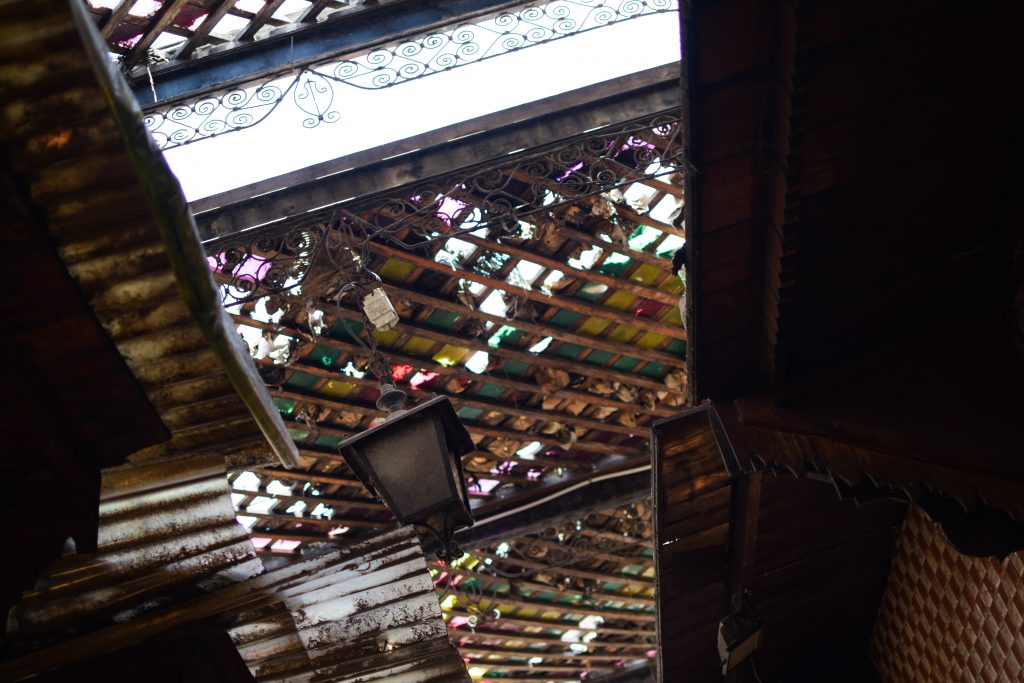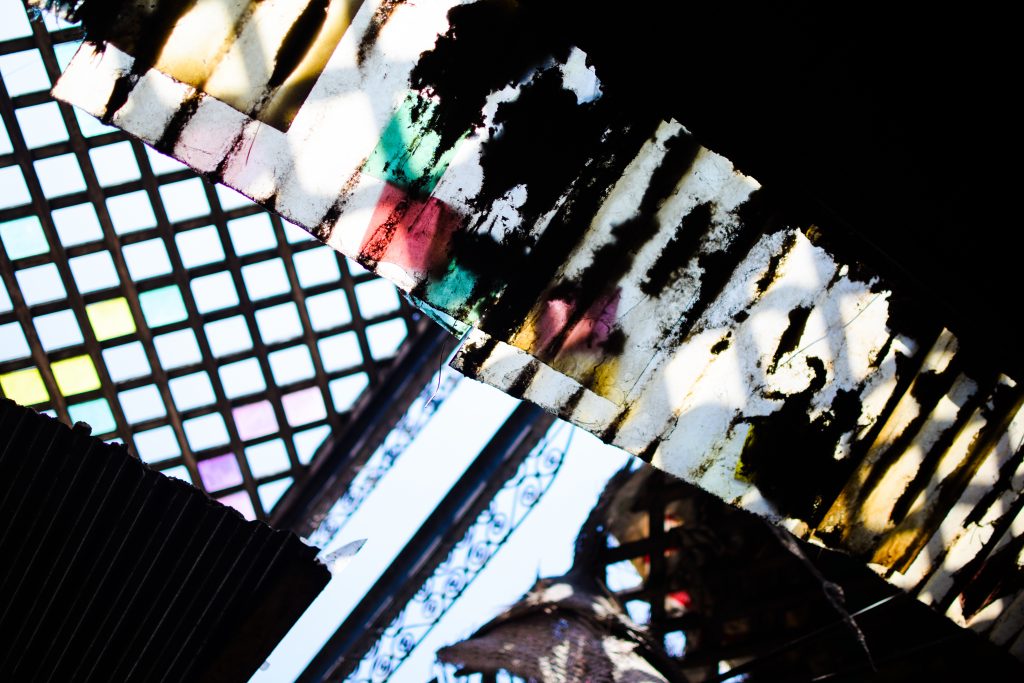One of the most enjoyable things we did while in Morocco was a day trip to Fes. From Rabat, the administrative capitol of the country, it’s just under a three hour train ride, and easy to do in a day. We took the first train available, which left at 7:15 am, and arrived at Fes around 10. To return, we took the train around 6 pm. The train wasn’t too full, but we reserved first-class seats anyway since they weren’t much more expensive and we wanted to be sure to be able to sit as a group.
Fes, in a few words, is a sprawling, twisting labyrinth. Especially in the medina. We hired a guide to take us around, since we knew that even locals often get lost in the narrow maze-like passageways. We spent most of the day in the medina, starting with the Andalusian side and making our way over to the markets and the tanning quartier.
In any medina, there are five necessary elements. First, running water, for hygiene and drinking but also for the religious ablutions (washings) before entering the mosque to pray. Second, a bakery. Third, a school for the children, typically a Koranic school like they have in Senegal. Fourth, a mosque, for prayers and religious services. And finally, a hammam, for bathing, but also for social interactions between men and between women. We passed all of these in the medina in Fes.
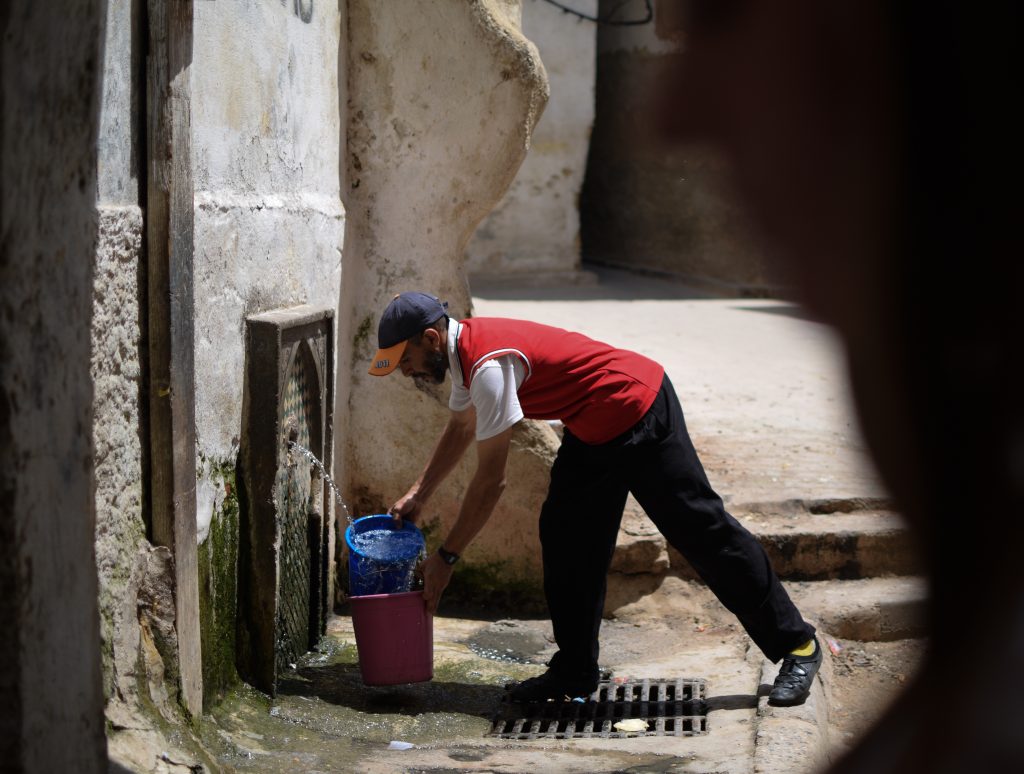
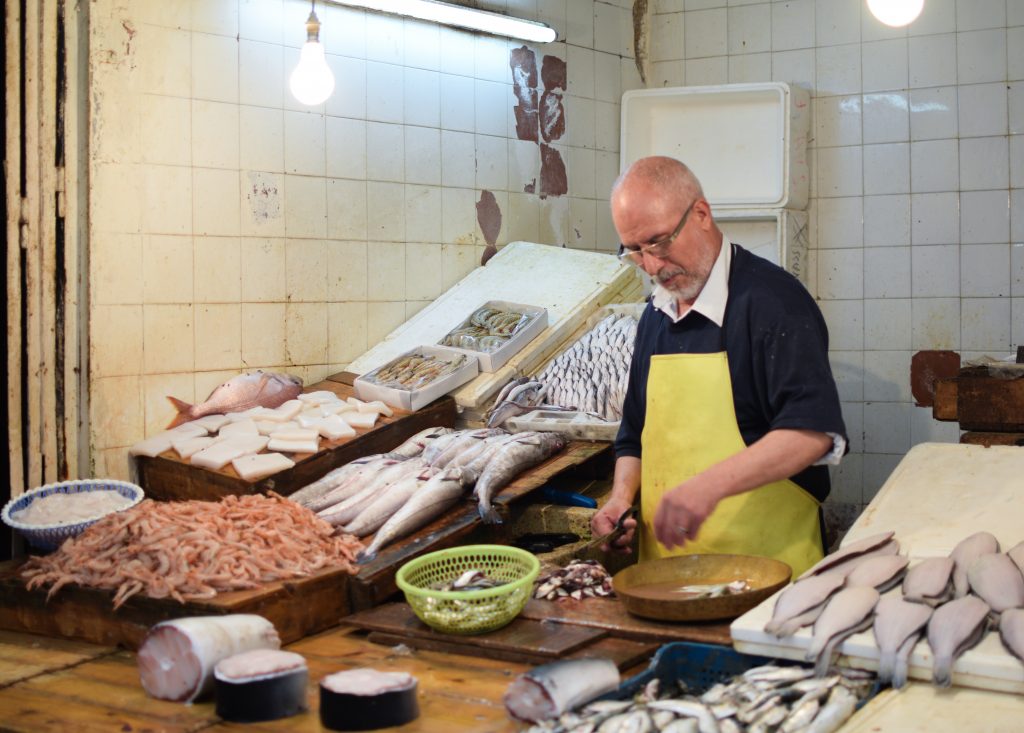
One of my favorite parts was learning about different textiles and leather products and seeing how they are made. We visited the tannery and saw the vats of dye and the skins laid out to dry. Be warned, if you decide to visit, it does not smell great. Thankfully, someone at the entrance was handing out mint sprigs to all the visitors, which we held up to our noses to drown out the smell of pickling hide, but sometimes it wasn’t quite enough.
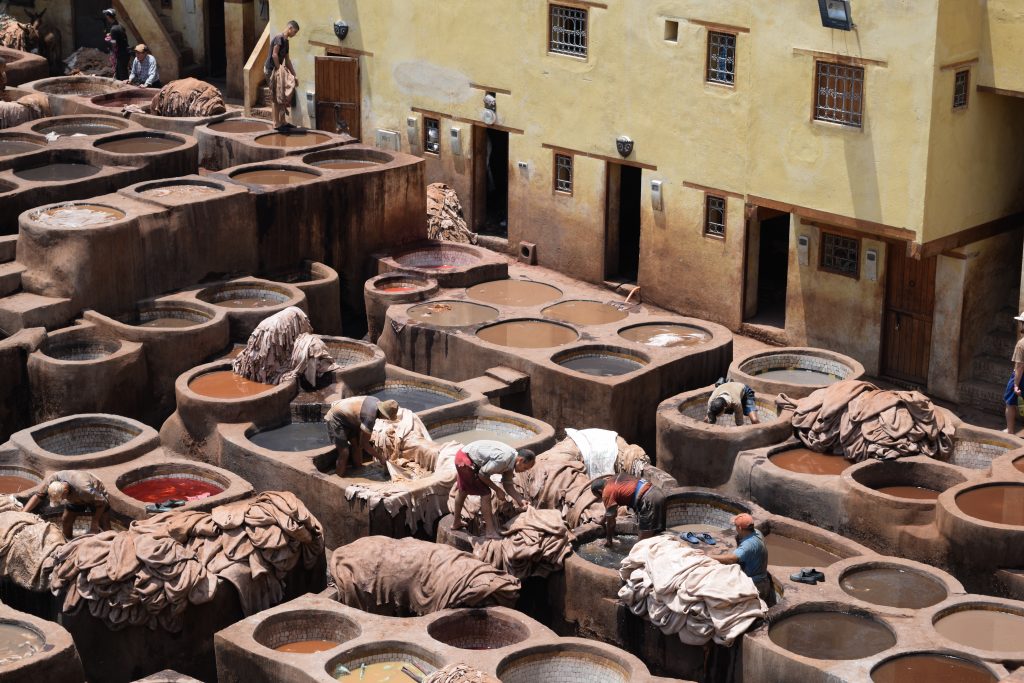
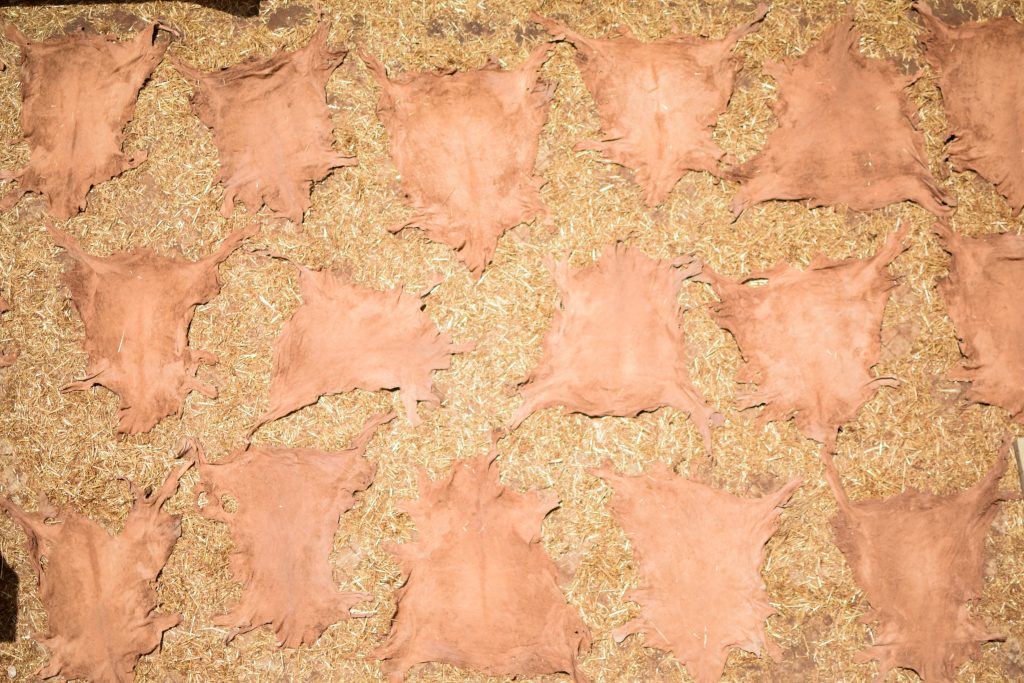
We also visited a textiles shop, where we watched them weaving fabric from cotton and silk on large looms. I’d never seen a loom in person before, and I found it mesmerizing to watch the shuttle go back and forth, back and forth, threading strand after strand. Though I didn’t buy any leather products, I did buy two scarves and a shirt at the textile shop. I appreciated being able to see and meet the people who were making the clothing, and hear them describe how they obtained their material. The things I got are beautifully crafted, and the merchants were kind, helpful, and willing to negotiate. I bartered the price down to half of what they asked.
Speaking of textiles, we also visited the district where they prepare and dye silk made from cactus. It was beautiful. It looked and felt much like real silk, but is entirely made from plants. I didn’t buy anything there, but later, in Chefchaouen, I bought a couple of pillow covers that are made from cotton but have some cactus silk woven in.
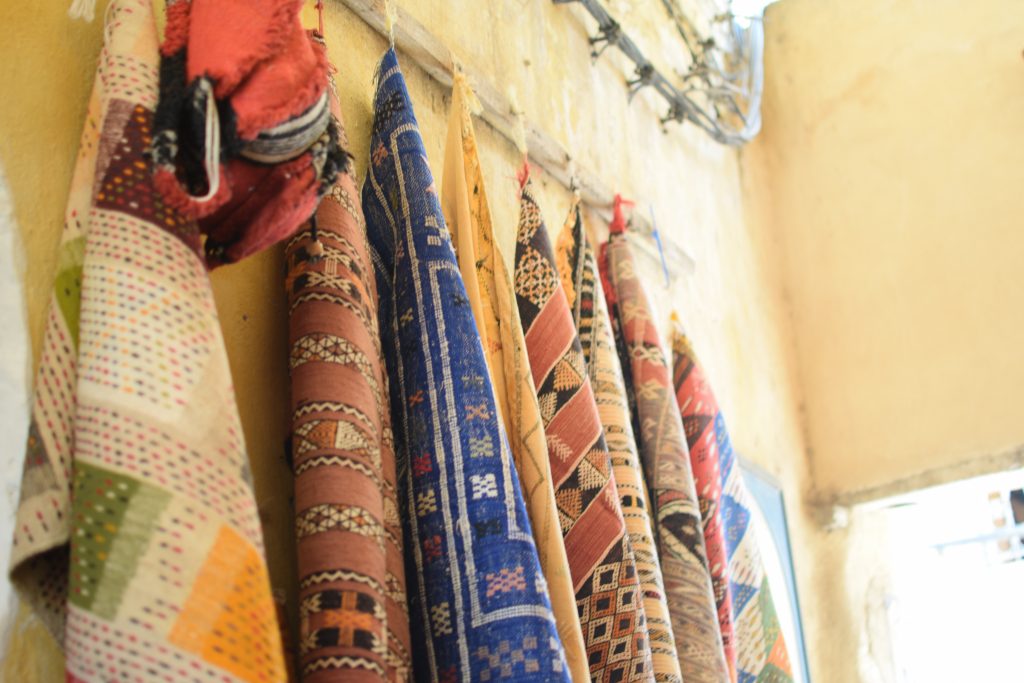
We visited a small museum. There were artifacts from civilizations there dating back hundreds and hundreds of years. The building itself was beautiful, too.

The culture and history of the city are fascinating, but the most impressive thing to me was the detail in the architecture. The colors, the patterns, the way the light falls on the street and the walls . . . It took my breath away.
